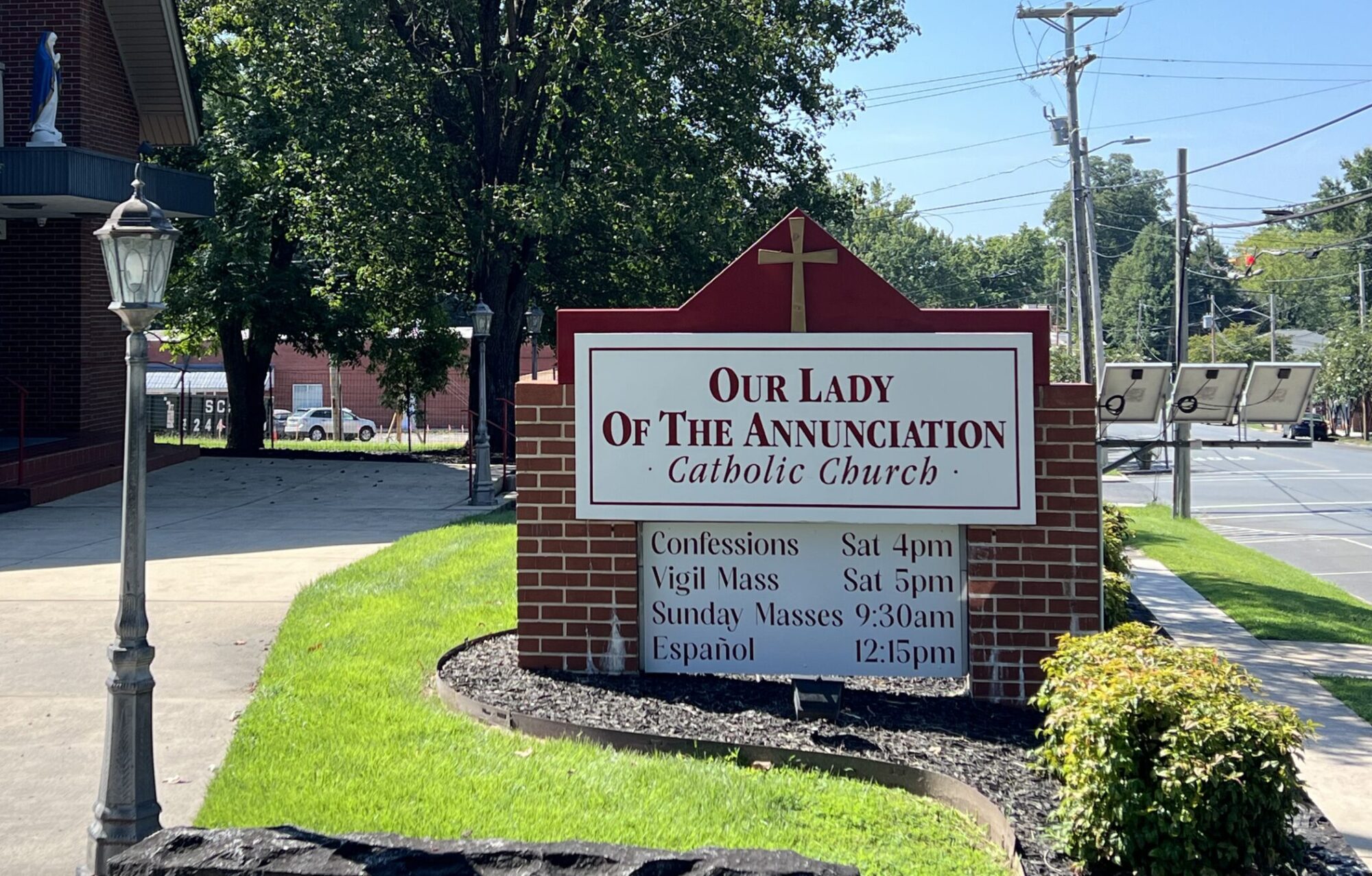
Daily Reflection – They May Forget What You Said, But…


416 N 2nd St, Albemarle NC 28001 | (704) 982-2910


It is God’s love that is still holding me by the shoulder as, spoonful by spoonful, I consume the warmth of his mercy into my physical and spiritual being. And when I am fully restored and well, it will be with love and great delight that he touches my hand and calls me to serve again.
We are not called to live a life of servitude to a demanding Father. We are his children whom he wants to heal and feed, then lift into service as evidence of his great love and delight in us. Let us not confuse the two any longer but open our eyes and be fed so that we might serve him from the fullness of our hearts and our confidence in his love.
— from When We Were Eve: Uncovering the Woman God Created You to Be
by Colleen Mitchell
//Franciscan Media//

Saint Philip Neri’s Story
Philip Neri was a sign of contradiction, combining popularity with piety against the background of a corrupt Rome and a disinterested clergy: the whole post-Renaissance malaise.
At an early age, Philip abandoned the chance to become a businessman, moved to Rome from Florence, and devoted his life and individuality to God. After three years of philosophy and theology studies, he gave up any thought of ordination. The next 13 years were spent in a vocation unusual at the time—that of a layperson actively engaged in prayer and the apostolate.
As the Council of Trent (1545-63) was reforming the Church on a doctrinal level, Philip’s appealing personality was winning him friends from all levels of society, from beggars to cardinals. He rapidly gathered around himself a group of laypersons won over by his audacious spirituality. Initially, they met as an informal prayer and discussion group, and also served poor people in Rome.
At the urging of his confessor, Philip was ordained a priest and soon became an outstanding confessor himself, gifted with the knack of piercing the pretenses and illusions of others, though always in a charitable manner and often with a joke. He arranged talks, discussions, and prayers for his penitents in a room above the church. He sometimes led “excursions” to other churches, often with music and a picnic on the way.
Some of Philip’s followers became priests and lived together in community. This was the beginning of the Oratory, the religious institute he founded. A feature of their life was a daily afternoon service of four informal talks, with vernacular hymns and prayers. Giovanni Palestrina was one of Philip’s followers, and composed music for the services. The Oratory was finally approved after suffering through a period of accusations of being an assembly of heretics, where laypersons preached and sang vernacular hymns!
Philip’s advice was sought by many of the prominent figures of his day. He is one of the influential figures of the Counter-Reformation, mainly for converting to personal holiness many of the influential people within the Church itself. His characteristic virtues were humility and gaiety.
After spending a day hearing confessions and receiving visitors, Philip Neri suffered a hemorrhage and died on the feast of Corpus Christi in 1595. He was beatified in 1615 and canonized in 1622. Three centuries later, Cardinal John Henry Newman founded the first English-speaking house of the Oratory in London.
Reflection
Many people wrongly feel that such an attractive and jocular personality as Philip’s cannot be combined with an intense spirituality. Philip’s life melts our rigid, narrow views of piety. His approach to sanctity was truly catholic, all-embracing, and accompanied by a good laugh. Philip always wanted his followers to become not less but more human through their striving for holiness.
//Franciscan Media//

“Whenever that sacrifice of Christ is memorialized in the Church, there is an application to a new moment in time and a new presence in space of the unique sacrifice of Christ Who is now in glory. In obeying His mandate, His followers would be representing in an unbloody manner that which He presented to His Father in the bloody sacrifice of Calvary. After changing the bread into His Body and the wine into His Blood: He gave it to them (Mark 14:22). By that communion they were made one with Christ, to be offered with Him, in Him, and by Him. All love craves unity. As the highest peak of love in the human order is the unity of husband and wife in the flesh, so the highest unity in the Divine order is the unity of the soul and Christ in communion.”— Archbishop Fulton J. Sheen, p. 401-2
//The Catholic Company//

“It is in the company of Jesus that you work for the glory of God.”
— St. John Baptist de la Salle
//The Catholic Company//


Saint Mary Magdalene de’ Pazzi’s Story
Mystical ecstasy is the elevation of the spirit to God in such a way that the person is aware of this union with God while both internal and external senses are detached from the sensible world. Mary Magdalene de’ Pazzi was so generously given this special gift of God that she is called the “ecstatic saint.”
Catherine de’ Pazzi was born into a noble family in Florence in 1566. The normal course would have been for her to have married into wealth and enjoyed comfort, but Catherine chose to follow her own path. At 9, she learned to meditate from the family confessor. She made her first Communion at the then-early age of 10, and made a vow of virginity one month later. At 16, Catherine entered the Carmelite convent in Florence because she could receive Communion daily there.
Catherine had taken the name Mary Magdalene and had been a novice for a year when she became critically ill. Death seemed near, so her superiors let her make her profession of vows in a private ceremony from a cot in the chapel. Immediately after, Mary Magdalene fell into an ecstasy that lasted about two hours. This was repeated after Communion on the following 40 mornings. These ecstasies were rich experiences of union with God and contained marvelous insights into divine truths.
As a safeguard against deception and to preserve the revelations, her confessor asked Mary Magdalene to dictate her experiences to sister secretaries. Over the next six years, five large volumes were filled. The first three books record ecstasies from May of 1584 through Pentecost week the following year. This week was a preparation for a severe five-year trial. The fourth book records that trial and the fifth is a collection of letters concerning reform and renewal. Another book, Admonitions, is a collection of her sayings arising from her experiences in the formation of women religious.
The extraordinary was ordinary for this saint. She read the thoughts of others and predicted future events. During her lifetime, Mary Magdalene appeared to several persons in distant places and cured a number of sick people.
It would be easy to dwell on the ecstasies and pretend that Mary Magdalene only had spiritual highs. This is far from true. It seems that God permitted her this special closeness to prepare her for the five years of desolation that followed when she experienced spiritual dryness. She was plunged into a state of darkness in which she saw nothing but what was horrible in herself and all around her. She had violent temptations and endured great physical suffering. Mary Magdalene de’ Pazzi died in 1607 at age 41, and was canonized in 1669. Her liturgical feast is celebrated on May 25.
Reflection
Intimate union, God’s gift to mystics, is a reminder to all of us of the eternal happiness of union he wishes to give us. The cause of mystical ecstasy in this life is the Holy Spirit, working through spiritual gifts. The ecstasy occurs because of the weakness of the body and its powers to withstand the divine illumination, but as the body is purified and strengthened, ecstasy no longer occurs. See Teresa of Avila’s Interior Castle, and John of the Cross’ Dark Night of the Soul, for more about various aspects of ecstasies.
//Franciscan Media//


Prayer begins through our recognition of ourselves as creatures, finite and yet aware of something greater. It is an impulse that takes us outside of ourselves, inspired by the expectation of some deeper meaning or the longing for an infinite existence. Prayer doesn’t issue from a sense of resignation about our condition but rather from a sense of hope: There must be something more. Through the act of prayer, a person attempts to reach beyond the boundaries of space and time and touch something transcendent, some ultimate Other who is responsible for everything that exists. Prayer expresses an all-pervasive longing for happiness, not in terms of emotional satisfaction but in terms of personal fulfillment. The impulse that grounds the act of prayer is an unconditional and sensitive openness to that which transcends all the ins and outs of everyday life. Prayer addresses the basic questions of human existence.
— from the book Inspired: The Powerful Presence of the Holy Spirit
by Fr. Gary Caster
//Franciscan Media//

Saint Bede the Venerable’s Story
Bede is one of the few saints honored as such even during his lifetime. His writings were filled with such faith and learning that even while he was still alive, a Church council ordered them to be read publicly in the churches.
At an early age, Bede was entrusted to the care of the abbot of the Monastery of St. Paul, Jarrow. The happy combination of genius and the instruction of scholarly, saintly monks, produced a saint and an extraordinary scholar, perhaps the most outstanding one of his day. He was deeply versed in all the sciences of his times: natural philosophy, the philosophical principles of Aristotle, astronomy, arithmetic, grammar, ecclesiastical history, the lives of the saints and especially, holy Scripture.
From the time of his ordination to the priesthood at 30—he had been ordained a deacon at 19—till his death, Bede was ever occupied with learning, writing, and teaching. Besides the many books that he copied, he composed 45 of his own, including 30 commentaries on books of the Bible.
His Ecclesiastical History of the English People is commonly regarded as of decisive importance in the art and science of writing history. A unique era was coming to an end at the time of Bede’s death: It had fulfilled its purpose of preparing Western Christianity to assimilate the non-Roman barbarian North. Bede recognized the opening to a new day in the life of the Church even as it was happening.
Although eagerly sought by kings and other notables, even Pope Sergius, Bede managed to remain in his own monastery until his death. Only once did he leave for a few months in order to teach in the school of the archbishop of York. Bede died in 735 praying his favorite prayer: “Glory be to the Father, and to the Son, and to the Holy Spirit. As in the beginning, so now, and forever.”
Reflection
Though his History is the greatest legacy Bede has left us, his work in all the sciences, especially in Scripture, should not be overlooked. During his last Lent, Bede worked on a translation of the Gospel of Saint John into English, completing it the day he died. But of this work “to break the word to the poor and unlearned” nothing remains today.
Saint Bede the Venerable is the Patron Saint of:
Scholars
//Franciscan Media//